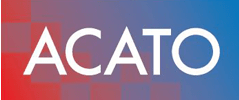Top Mistakes to Watch Out for When Using ISO 9001 Templates

Top Pitfalls to Sidestep When Implementing ISO 9001 Templates for Quality Management Excellence
Rolling out ISO 9001 templates without a clear strategy can lead to audit non-compliance, wasted effort, and considerable frustration. While over a million organisations globally hold ISO 9001 certification, many grapple with generic documentation, a lack of leadership buy-in, and system conflicts. This guide uncovers the most common template traps, explains their origins, and provides actionable solutions. You’ll learn how to sidestep template customisation errors, secure leadership commitment, safeguard your processes, navigate strategic challenges, and tailor templates for ongoing improvement. We’ll also highlight how ACATO’s expert ISO 9001 template customisation and implementation support can streamline your operations, enhance your audits, and secure a complimentary consultation to guide your success.
What Are the Most Common ISO 9001 Template Implementation Mistakes?

Frequent mistakes in implementing ISO 9001 templates often stem from a disconnect with core business processes, excessive paperwork, weak document control, and poor integration with digital systems. These issues can undermine quality management by creating inconsistent records, slowing down decision-making, and reducing team engagement. Identifying these key problems early is crucial to prevent audit findings and unnecessary expenditure.
Here are the four most frequent errors organisations encounter when applying off-the-shelf ISO 9001 templates:
- Generic Templates Without Customisation – Templates that overlook unique workflows often result in irrelevant procedures.
- Over-Documentation Creating Bureaucracy – An excess of forms and reports can overwhelm users with paperwork.
- Poor Version Control of Documents – Unmanaged changes lead to conflicting information and a loss of traceability.
- Lack of Integration with IT Systems – Disconnected templates fail to leverage digital QMS tools, leading to manual errors.
Understanding each of these pitfalls is the first step towards implementing targeted solutions and achieving a smoother ISO 9001 adoption, without imposing rigid structures.
Why Do Generic ISO 9001 Templates Fail Without Customisation?
Generic ISO 9001 templates often fall short because they assume uniform processes across diverse industries and organisational cultures. A one-size-fits-all document can misrepresent actual workflows, forcing staff to adapt procedures rather than follow intuitive steps. When templates don’t align with company terminology, roles, and technology, employees may bypass or ignore mandatory records.
Customisation ensures that ISO 9001 templates accurately reflect your specific processes, risk assessments, and performance metrics. For instance, adapting a template to include IT security checkpoints embeds data protection into your quality reviews. Tailored documents also foster a sense of ownership by using familiar language and relevant examples. Consequently, audits can focus on genuine process adherence rather than superficial compliance.
Ensuring each template mirrors your operational reality prevents redundant tasks and non-conformities, paving the way for efficient certification readiness and sustained improvement.
How Does Over-Documentation Create Bureaucracy in ISO 9001?
Over-documentation occurs when templates mandate more records than are truly necessary, transforming quality management into an administrative burden. Excessive forms, logs, and approval steps can slow down daily operations and drain resources. When employees perceive paperwork as the primary objective, rather than quality outcomes, engagement diminishes and compliance suffers.
Streamlining documentation involves focusing solely on the essential evidence that demonstrates process control and continuous improvement. For example, consolidating similar checklists into a single integrated log preserves information while reducing duplication. Lean templates eliminate redundant fields and prioritise risk-based entries that deliver genuine value. By focusing on critical records, organisations can maintain agility and keep quality management active rather than dormant.
Reducing bureaucratic paperwork frees up teams to concentrate on process performance, setting the stage for the next challenge: maintaining document integrity through robust version control.
What Problems Arise from Poor Version Control of ISO 9001 Documents?
Poor version control creates confusion when multiple iterations of a document circulate without clear tracking. Outdated procedures might remain in use, leading to inconsistent product quality, audit observations, and recurring corrective action loops. A lack of traceability also hinders effective root-cause investigations when non-conformities occur.
Below is a comparison of common version control issues:
| Document Issue | Impact | Evidence |
|---|---|---|
| Untracked Revisions | Multiple conflicting procedures in use | Audit reports cite divergent records |
| Missing Approval | Unauthorized changes applied | Corrective actions triggered repeatedly |
| Inadequate Archiving | Lost historical data | Internal audits reveal data gaps |
These issues make it challenging to demonstrate controlled processes during certification assessments. Establishing clear revision numbering, implementing electronic check-in/out systems, and conducting periodic reviews can restore integrity and support seamless integration with digital quality management platforms.
How Can Lack of Integration with Existing IT Systems Cause Template Failures?
When ISO 9001 templates remain isolated from enterprise systems—such as ERP, document management, or risk-register software—data duplication and manual transcriptions become commonplace. Users may find themselves juggling spreadsheets, paper forms, and email attachments, increasing error rates and undermining real-time visibility.
Seamless integration aligns templates with digital workflows. Embedding template fields within a central QMS portal ensures that changes propagate automatically and that management reviews draw upon up-to-date performance metrics. Automated notifications prompt corrective action follow-up, while dashboards display non-conformity trends. By linking templates to IT systems, organisations can reduce manual effort, improve traceability, and accelerate decision-making for quality management success.
How Does Leadership Commitment Affect ISO 9001 Template Success?

Leadership commitment is fundamental to the effective implementation of ISO 9001 templates. Without clear executive sponsorship, teams may view QMS activities as optional extras rather than strategic enablers. Engaged management ensures the allocation of necessary resources, reinforces expectations, and models quality-driven behaviour.
Top management drives cultural change by championing customised templates, investing in training, and actively monitoring performance metrics. Their visible support ensures that quality management becomes an integral part of business objectives, rather than a mere checkbox exercise. Recognising this influence empowers organisations to embed ISO 9001 templates into daily operations and sustain momentum for continuous improvement.
Why Is Top Management Buy-In Critical for ISO 9001 Implementation?
Top management buy-in establishes the standard for quality across all organisational levels. When executives articulate the strategic value of customised ISO 9001 templates, employees gain a clearer understanding of how QMS outputs contribute to customer satisfaction, cost reduction, and risk mitigation. Leadership endorsement also secures the necessary budget for template adaptation tools and process audits.
Furthermore, active participation—such as attending management reviews—reinforces accountability. This visible engagement signals that quality management is non-negotiable and that all staff share responsibility. As a result, template utilisation shifts from mere form-filling to performance optimisation, enhancing audit readiness and long-term success.
How Does Employee Training Influence Effective Use of ISO 9001 Templates?
Comprehensive employee training equips staff with the knowledge needed to apply customised templates accurately. Clearly defining roles, explaining terminology, and demonstrating digital QMS workflows can significantly reduce errors and confusion. Practical workshops that guide teams through real-world scenarios foster confidence and highlight the value of each document.
Ongoing refresher sessions and just-in-time e-learning modules help maintain competence as templates evolve. When employees understand the purpose behind specific fields—such as those in risk registers or corrective action logs—they contribute more meaningful data that drives continuous improvement. Effective training transforms ISO 9001 templates from static documents into dynamic tools that actively support quality objectives.
What Are the Risks of Employee Disengagement During ISO 9001 Implementation?
Employee disengagement often arises from unclear expectations, a lack of context, or overly complex templates. When staff perceive QMS documents as mere busywork, they may skip entries or resort to unofficial shortcuts. This behaviour can compromise data integrity, create gaps in audit trails, and lead to non-conformities.
Preventing disengagement involves linking templates directly to everyday tasks and their outcomes. Demonstrating how quality records inform process improvements or customer feedback responses highlights their real-world impact. Encouraging team input during template design fosters ownership and can reveal hidden process nuances. Engaged staff become valuable advocates for quality, ensuring that ISO 9001 templates remain relevant and effective.
Why Should ISO 9001 Responsibility Be Shared Across the Organisation?
Concentrating QMS responsibility on a single individual poses a risk of single-point failure if that person becomes unavailable or lacks the necessary authority. Distributing responsibility among process owners and department leads embeds quality accountability at multiple levels. This shared model ensures timely updates to customised templates, consistent record-keeping, and diverse perspectives during audits.
Cross-functional quality teams can collaborate on maintaining process maps, risk assessments, and performance reviews. Shared ownership cultivates a culture where each stakeholder understands how ISO 9001 templates contribute to customer trust and operational excellence, sustaining momentum beyond initial certification.
How Can You Avoid Process and System Failures in ISO 9001 Template Use?
Process and system failures can occur when the QMS scope is poorly defined, documentation is inconsistent, or the process approach is neglected. Effective templates precisely capture boundaries, clarify record-keeping requirements, and enforce continuous improvement steps. Addressing these areas proactively prevents stagnation and directs quality management towards measurable outcomes.
What Are the Consequences of Inadequate QMS Scope Definition?
Inadequate scope definition happens when templates lack clear boundaries for products, services, or locations. This vagueness can lead to confusion about which processes require documentation and audit coverage. Organisations might overextend resources auditing irrelevant areas or miss critical operations entirely, resulting in non-conformities.
Precise scope statements integrated into templates ensure that every process owner understands the applicable requirements. Including specific departmental interfaces and exclusions focuses efforts and aligns audits with strategic objectives. A correctly scoped QMS template safeguards both compliance and operational efficiency by targeting the right activities.
How to Master ISO 9001 Documentation and Record-Keeping Best Practices?
Mastering documentation involves organising template sections by process sequence, assigning clear ownership, and specifying retention periods. Labelling each record with its version, date, and author maintains traceability. Centralised filing—whether physical or electronic—ensures ease of retrieval during audits or management reviews.
Implementing a documentation matrix as part of the template lists all required documents, responsible parties, and review schedules. This approach prevents record gaps and supports upstream process control. Consistent file naming conventions and metadata tagging further streamline searches and demonstrate robust record-keeping practices.
Why Is Embracing the Process Approach Essential for ISO 9001 Success?
The process approach organises QMS templates around workflows rather than isolated procedures, creating clarity regarding inputs, activities, outputs, and interactions. This methodology fosters a better understanding of process performance and interdependencies. When templates accurately reflect step-by-step flows, teams can better see how their tasks contribute to overall quality objectives.
Process-oriented templates also simplify risk assessments by mapping hazards and opportunities directly to each workflow stage. Embedding this structure into documents promotes accountability and facilitates continuous monitoring. Adopting the process approach ensures that ISO 9001 templates effectively guide improvements where they are most needed.
How Do Internal Audits and Corrective Actions Drive Continuous Improvement?
Internal audits evaluate template usage, identify non-conformities, and reveal opportunities for enhancement. Recording audit findings in standardised logs triggers corrective action templates that assign root-cause analysis, responsibilities, and deadlines. This closed-loop system transforms issues into structured improvement projects.
Regular audit cycles—supported by customised checklist templates—build confidence in QMS effectiveness. Corrective action templates that integrate risk-based priorities ensure that resources are directed towards the most critical quality gaps. Over time, this disciplined approach embeds continuous improvement as a core outcome of ISO 9001 template use.
Why Is Treating Certification as a Journey, Not an End Goal, Important?
Viewing certification as a discrete milestone can often lead to QMS neglect after the audit. Instead, embracing ISO 9001 as an ongoing journey embeds quality thinking into daily operations. Templates should include fields for monitoring key performance indicators and capturing lessons learned.
Continuous monitoring templates guide management reviews and facilitate updates to risk registers, ensuring that the system evolves with new challenges and opportunities. Embracing certification as a journey secures lasting gains in customer satisfaction, operational resilience, and resource efficiency.
What Strategic and External Issues Commonly Cause ISO 9001 Template Failures?
Beyond internal processes and people, external factors such as misunderstanding requirements, overlooking customer feedback, and weak supplier controls can hinder template effectiveness. Strategic alignment of QMS templates with business goals and stakeholder needs ensures relevance and resilience.
How Can Misunderstanding ISO 9001 Requirements Lead to Implementation Errors?
Misinterpreting standard clauses can result in templates that omit critical controls or include unnecessary steps. For example, confusing requirements for risk-based thinking with separate hazard logs might fragment risk management efforts. Involving subject-matter experts in template design can clarify interpretations.
Accurate requirement mapping within templates—linking each clause to specific fields—prevents gaps. Embedding explanatory notes for each clause guides users and aligns documentation with the official ISO 9001 intent, thereby reducing errors and audit findings.
Why Is Integrating Customer Feedback Vital for Quality Management Success?
Customer feedback provides invaluable insights into real-world performance and satisfaction levels. When templates include structured feedback logs, organisations can capture key information on product quality, service delivery, and process reliability. Analysing trends from this feedback informs corrective actions and opportunity registers.
Embedding customer input into QMS templates closes the loop between expectation and delivery. This practice demonstrates a genuine commitment to continuous improvement and fosters trust, as executives can see direct links between template records and customer loyalty.
How Does Inadequate Supplier Management Impact ISO 9001 Compliance?
Supplier performance directly influences product quality and service continuity. Templates that lack fields for supplier evaluation and monitoring create gaps within the QMS. Non-conformities may originate upstream yet remain undocumented.
Incorporating supplier audit checklists, performance scorecards, and corrective action logs into ISO 9001 templates ensures that third-party risks are effectively managed. This external focus strengthens the entire quality chain and safeguards compliance.
What Are Best Practices for Embedding ISO 9001 into Daily Business Operations?
Embedding ISO 9001 into daily workflows means integrating template prompts into routine activities—such as shop-floor reviews, customer service handovers, and project kick-offs. Digital checklists or mobile-friendly forms can streamline data capture at the point of work.
Templates that align with operational KPIs—such as defect rates or on-time delivery—make QMS records more meaningful for frontline staff. When quality management supports, rather than interrupts, daily tasks, organisations achieve true integration and sustained success.
How Can You Effectively Customise ISO 9001 Templates to Avoid Common Pitfalls?
Effective customisation involves tailoring templates to your organisation’s culture, technology, and process maturity. This ensures that documents feel intuitive to users and that records capture only relevant information. A systematic customisation approach mitigates the risks associated with generic templates and aligns the QMS with strategic goals.
What Steps Ensure ISO 9001 Templates Align with Unique Business Processes?
Begin by mapping all core processes and identifying the required documentation at each stage. Cross-reference process maps with standard clauses to determine the necessary template fields. Engage process owners to validate content, terminology, and workflow logic.
Once drafted, pilot customised templates with a small group, collect feedback, and refine fields accordingly. This iterative method ensures that the final documents accurately reflect real-world practices, fostering adoption and consistent record-keeping.
How to Embed Risk-Based Thinking into ISO 9001 Templates from the Start?
Embedding risk-based thinking means integrating risk and opportunity registers directly into process templates. Each section prompts users to identify hazards, assess likelihood, and determine controls specific to that activity.
The table below illustrates a risk register template structure:
| Process Stage | Risk Description | Likelihood | Control Measure | Owner |
|---|---|---|---|---|
| Customer Order | Incorrect order specifications | Medium | Verification checklist | Sales Lead |
| Production Setup | Equipment calibration deviations | Low | Scheduled calibration protocol | Quality Team |
| Delivery Scheduling | Late shipment due to capacity | High | Automated scheduling alerts | Operations |
By prompting risk considerations early, templates guide proactive controls, reduce non-conformities, and align with ISO 9001’s preventive focus.
What Are Best Practices for Creating Lean, User-Friendly ISO 9001 Documentation?
Lean documentation prioritises clarity and brevity. Use clear headings, consistent terminology, and optional guidance notes rather than lengthy instructions. Group related fields into collapsible sections or tabs in digital formats to reduce perceived complexity.
User-friendly templates employ conditional fields that appear only when relevant, guiding users without overwhelming them. Regular reviews help prune outdated sections, ensuring documents evolve with process changes and maintain high adoption rates.
How Can Digital Tools Enhance ISO 9001 Template Integration and Control?
Digital quality management systems automate version control, distribute templates to relevant teams, and capture records via mobile or web interfaces. Automated workflows route documents for review, approval, and management sign-off, eliminating paper-based delays.
Built-in analytics dashboards track key metrics from templates—such as corrective action completion rates—and highlight trends. Integration with existing IT systems ensures that quality data feeds into enterprise reporting, fostering transparency and strategic decision-making.
What Are the Benefits of Avoiding ISO 9001 Template Mistakes for Quality Management Success?
Avoiding common template errors yields tangible benefits: streamlined audits, higher employee engagement, faster certification readiness, and a dynamic QMS that drives continuous improvement. Organisations experience fewer non-conformities, reduced administrative overhead, and stronger alignment with business objectives.
How Does Correct Template Use Improve Certification Readiness and Audit Performance?
The correct use of customised templates generates consistent, traceable records that directly address audit criteria. Auditors can spend less time clarifying documents and more time validating process effectiveness. This focus reduces audit duration, lowers non-conformity counts, and accelerates certification timelines.
In What Ways Does Customised ISO 9001 Documentation Boost Operational Efficiency?
Tailored templates eliminate redundant steps and guide teams to record only pertinent information. This lean approach saves time on data entry, reduces errors, and frees up resources for value-added tasks. Clear process flows embedded in documents improve handovers and minimise miscommunications.
How Does Leadership and Employee Engagement Enhance QMS Effectiveness?
When leaders champion customised ISO 9001 templates and staff understand their purpose, quality management transforms into a collaborative effort. Engaged teams proactively identify improvements, use records to drive performance, and support a culture of accountability. This synergy elevates QMS effectiveness and embeds quality into the organisational DNA.
Why Is Continuous Improvement Key to Long-Term ISO 9001 Success?
Continuous improvement ensures that QMS templates evolve to accommodate new risks, technologies, and market demands. Templates featuring fields for performance reviews, suggestion entries, and management action plans embed Kaizen principles. Over time, this living system drives incremental gains in product quality, customer satisfaction, and operational resilience.
How Can ACATO Support You in Avoiding ISO 9001 Template Implementation Errors?
ACATO specialises in ISO 9001 template customisation and implementation support, combining expertise in IT security, data privacy compliance, and quality management. By partnering with ACATO, organisations gain access to tailored templates, seamless digital integration, and expert training to sidestep common pitfalls and achieve lasting success.
What ISO 9001 Template Customisation Services Does ACATO Offer?
ACATO’s consultants conduct process workshops, map unique workflows, and adapt template structures to align with organisational language and technology. Each customisation project includes risk and opportunity registers, audit checklists, and corrective action modules aligned with official ISO 9001 clauses. This ensures templates accurately reflect real operations and drive user adoption.
How Does ACATO Help Integrate ISO 9001 Templates with Existing Systems?
Leveraging its background in IT security and data compliance, ACATO configures digital quality management platforms to host customised templates. Automated version control, user-role permissions, and analytics dashboards connect QMS data with enterprise systems, ensuring seamless data flow and robust traceability.
What Training and Consultation Does ACATO Provide to Ensure QMS Success?
ACATO delivers tailored training workshops, on-demand e-learning modules, and hands-on coaching sessions to equip teams with the skills to use, update, and improve templates. Ongoing consultation services include audit preparation support, management review facilitation, and risk-based assessment guidance to foster continuous improvement.
How to Book a Free ISO 9001 Consultation with ACATO?
To explore how ACATO’s expertise can streamline your ISO 9001 implementation and help you avoid common template mistakes, book a free consultation today. Engage with our certified lead auditors to assess your current QMS, identify gaps, and develop a customised roadmap for certification success.
Implementing ISO 9001 templates requires careful customisation, dedicated leadership engagement, and robust process integration. By avoiding generic documents, excessive paperwork, weak version control, and siloed systems, organisations position themselves for successful audits and continuous improvement. With ACATO’s tailored services, you gain the essential tools, training, and digital support needed to embed a living QMS that drives quality management success now and into the future. Book your free ISO 9001 consultation to start transforming your quality system today.

